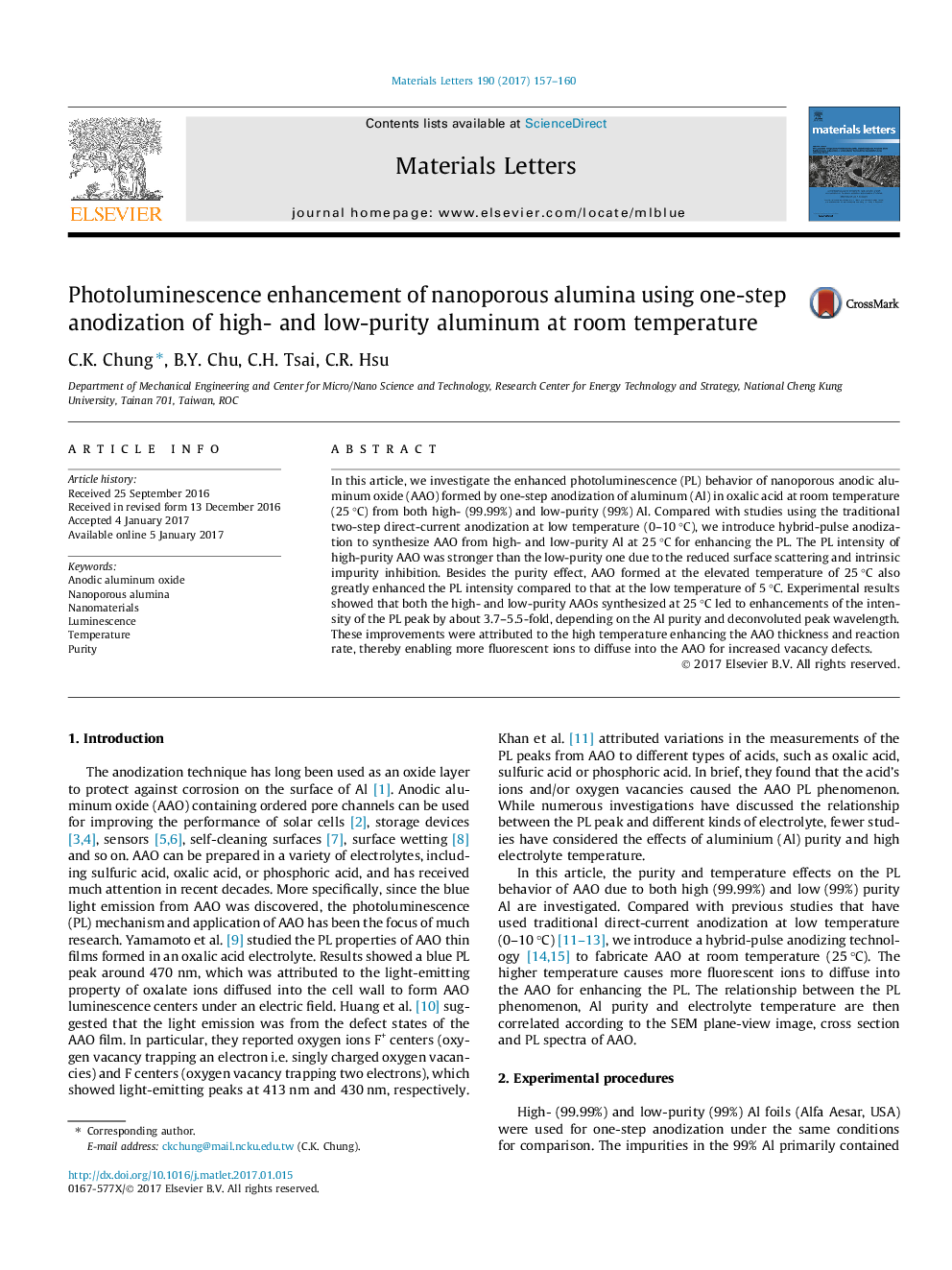| Article ID | Journal | Published Year | Pages | File Type |
|---|---|---|---|---|
| 5464196 | Materials Letters | 2017 | 4 Pages |
Abstract
In this article, we investigate the enhanced photoluminescence (PL) behavior of nanoporous anodic aluminum oxide (AAO) formed by one-step anodization of aluminum (Al) in oxalic acid at room temperature (25 °C) from both high- (99.99%) and low-purity (99%) Al. Compared with studies using the traditional two-step direct-current anodization at low temperature (0-10 °C), we introduce hybrid-pulse anodization to synthesize AAO from high- and low-purity Al at 25 °C for enhancing the PL. The PL intensity of high-purity AAO was stronger than the low-purity one due to the reduced surface scattering and intrinsic impurity inhibition. Besides the purity effect, AAO formed at the elevated temperature of 25 °C also greatly enhanced the PL intensity compared to that at the low temperature of 5 °C. Experimental results showed that both the high- and low-purity AAOs synthesized at 25 °C led to enhancements of the intensity of the PL peak by about 3.7-5.5-fold, depending on the Al purity and deconvoluted peak wavelength. These improvements were attributed to the high temperature enhancing the AAO thickness and reaction rate, thereby enabling more fluorescent ions to diffuse into the AAO for increased vacancy defects.
Related Topics
Physical Sciences and Engineering
Materials Science
Nanotechnology
Authors
C.K. Chung, B.Y. Chu, C.H. Tsai, C.R. Hsu,
